Making the Best Choices in Mass Finishing
Choice of equipment, media and compounds has a major impact on your finishing applications.
Mass finishing refers to any deburring, edge-breaking or surface-conditioning process in which the workpieces, although confined in a chamber, are not fixtured. As the term is applied in manufacturing today, it includes tumbling barrels, vibratory finishers, centrifugal barrels and centrifugal disc machines. Other processes, such as tumble-blast finishing, magnetic finishing, and drag and spin finishing also fit loosely under the mass finishing umbrella.
First, an Overview
Successful equipment changes during the past decade include more automatic versions of typical batch machines; complex loading and unloading conveyor systems, including robotic handling have been designed; and, much larger machines for large parts such as aircraft wing spars and jet engine components. A large tub-style batch vibrator holding more than 11 tons of plastic media was built for a special application. And, vibratory finishing has been combined with blast finishing in a single pass, helical-style, multi-pass bowl machine. This machine is aptly named SpiraBlast and the process is aptly named, “SpiraBlasting.” It can even wash and dry the parts before they are discharged.
The basic processes used in mass finishing have not changed dramatically, although some terms such as “isotropic” have been added to the mass finishing vocabulary to describe the omni-directional finishes obtained. In recent years, the phenomenon of surface stress relieving during mass finishing, other than shot blast peening, has been successfully applied. High-density ceramic media (120-150 lbs./cu. ft.) is gaining in popularity as its advantages are better communicated and understood.
Centrifugal disc finishing is moving into second place as the specified mass finishing method for new installations. Its speed offsets some of the disadvantages of being limited to batch operations, although creative handling systems are making the process increasingly acceptable. The higher operating costs continue to discourage some prospective users. In the past few years, almost all mass finishing equipment manufacturers have introduced centrifugal disc finishers into their offerings.
Tumbling barrels most often are batch machines, but some are available for in-line, single-pass processing, or automated batch finishing. Tumblers still have a useful place in manufacturing, particularly for part-on-part processing of small parts—such as flat washers and fasteners—and for deburring, polishing and washing. Many of the smaller tumblers reside in jewelry manufacturing and lapidary shops, while large, automated systems are used for deburring and washing in high-volume production of stampings, forgings or similar parts.
Centrifugal tumblers are the most difficult to automate because of their design. Some improvements have developed over the years, but these are usually elaborate media-handling systems with independent separating screens and overhead conveyors, bucket elevators, elevated hoppers and other paraphernalia designed to make the operator’s job less strenuous but usually more complicated. Centrifugal tumblers are the fastest of the mass finishing processes and have earned themselves a niche when severe radii or stock removal are required. They also are excellent burnishing machines. The high speed of these machines often makes up for their labor intensity.
Vibratory finishing continues as the most popular choice among these processes. Much of its success is attributed to ease of automation. Round vibrators (toroid designs), with their internal separation of parts and media, continue to be the benchmark of convenience .
So Which Process Is Best?
How do you know which process is best suited for your application? First, become familiar with the fundamentals of each approach. Here is a very brief description of each:
Tumbling Barrels. These are either open or closed work chambers. Media, water, compound and parts are the usual ingredients. They provide a rolling and tumbling action of the workload. The speed of rotation is regulated to give peripheral velocities ranging from 12 to 40 fpm. Lower speeds are for polishing, and higher speeds are for more aggressive deburring and edge breaking. The action on the parts is restricted to areas that are easily contacted in the linear direction of the media or part-to-part action. This restricts it to exterior surfaces and edges. Because parts fall on one another, there is more denting of the surfaces than with other processes. Tumbler sizes range from tabletop machines with less than a quart capacity to very large machines that process more than 1,000 lbs. of parts in a single load. Continuous design tumblers process large volumes of parts with in-line production. Also, automated batch tumblers offer longer time cycles for large batches of parts. Most tumbling barrels are capable of operating with or without media.
Tumbling equipment is also well suited to dry tumbling for deburring and cob drying. Tumblers can be equipped for cryogenic deflashing of rubber parts, usually using dry ice as media.
Centrifugal Tumblers. These remind you of a Ferris wheel because small baskets are mounted on the periphery of a large revolving wheel. The wheel turns fast, developing high centrifugal forces in the baskets. The small baskets rotate in the opposite direction from the large wheel, causing their contents to rub together under high pressure. In most machines, the large wheel rotates vertically; less-popular horizontal models are also available. The force of the pressure is 15 to 20 times the force of gravity. This gives finishing similar to that of a conventional tumbler, only much faster. Another advantage is that finishes can be smooth because of the high compressive loads applied to the surface. Some handling systems are offered to facilitate loading and unloading of the individual baskets. This is, however, a batch operation.
Vibratory Finishing. The basics are a work chamber containing workpieces, media and compound solution. The media and/or solution are eliminated in some cases. The chamber is vibrated in the range of 900 to 3,600 vibrations/min, with an amplitude ranging from 1 or 2 mm to as much as 10 or 15 mm. Generally, the amplitude and frequency are used in inverse proportions, with high-frequency machines having lower amplitudes. The action of the ingredients results in deburring, edge breaking and polishing as the workpieces and/or media interact. One advantage over the other three processes is that concave and interior surfaces are subjected to some action. A major advantage is that handling of parts and other ingredients is easily automated, and in the case of toroidal (round) machines, can even be accomplished within the machine’s work chamber. The parts can be handled in batches, or continuously fed into through-feed machines.
Tub-style machines can handle very large parts. The largest tub-style machine built to date has 425-cu. ft. capacity and is vibrated by 10 eccentric shafts, five on each side, and powered by a single 60-hp motor. Tub designs also are used for fixture processing, a method which attaches the parts to each other, to the frame of the tub or both. This eliminates part-on-part damage and allows for processing of very large parts while increasing the abrasive or polishing action two or three fold.
The original, continuous, through-feed vibrators are long troughs or tubes with parts and media rolling repeatedly as they travel the straight length of the tub. The parts and media are separated at the discharge end, and media is conveyed back to the beginning. These single, in-line, through-feed machines are very popular. An alternative to in-line designs is available in the round machines that can process the parts in a single pass. These systems have fewer components because separation occurs internally and the media never leaves the process bowl. They have a lower power requirement and lower maintenance. Each style should be considered when short time cycles suffice (under 30 min).
The need for longer process times in a single pass is being answered with some creative designs. Two of these use the round concept with circular channels. One of these winds the channel around the center post in increasing diameters while in a descending helical path. Parts and media travel downward to an external, though integrated, media separator. The media is conveyed back to the beginning. The other uses stacked channels of the same radius and the mass travels upwards in a helical path to be discharged onto an integrated separation deck. Media is gravity fed down to the lower, starting level. Another innovative design uses straight tubes stacked on each side of the machine. The tubes slope downwards, moving the mass to the lower end. Then, the mass enters a U-shaped channel and is transported to the top of the tube on the opposite side of the machine. This continues until parts and media have traveled the length of all the tubes. Typically, three tubes are on each side of the machine. The advantage of this design is that tubes of any length or diameter can be employed to meet the production requirement. All three of these so-called “multi-pass” machines use very little floor space, considering the length of the process channel. There is a minimum of part-to-part contact with these machines, giving them an advantage with very delicate parts. A common disadvantage is that less work is performed in a given process time. Of the multi-pass designs, the most popular has been the toroidal, helical design with circular channels of increasing diameters wrapped around the center post.
Automated batch machines, both tubs and bowls, provide varied process times and flexibility for a variety of applications. The straight-through and single-pass round machines generally have time cycles under 30 minutes. The multi-pass machines offer time cycles as long as two hours. Vibratory finishers range in sizes from tabletop models holding less than a half-gallon, to through-feed and batch machines with capacities greater than 400 cu. ft.
Although there are many designs for automating vibratory finishers, hand loading and unloading of parts is still very popular. This is sometimes the best way to protect delicate parts, and it can be economically sound. A single operator working amongst several vibrators can keep them all employed while he manually loads and unloads the parts. In one case, a single operator can manually load and unload 17 round, 10-cu.ft. machines.
Centrifugal Disc Finishers. These are batch processing machines, as are the centrifugal barrels. The work chamber is a vertical cylinder; it can have either straight or curved, stationary sides. The action occurs when the disc-shaped bottom of the chamber is rotated in the range of 150 to 300 rpm. Centrifugal force pushes the workload outward, while the spinning bottom plate pushes it forward. When reaching the side of the chamber, the mass rises until everything falls back toward the bottom to repeat the trip. It looks like a deep whirlpool or very much like a food blender at work. The sliding and impinging action of parts and media on each other create the deburring and polishing action. This process is particularly suited to smaller parts and can even be done part-on-part, with or without a liquid. Production rates are attractive because of shorter cycle times than those achieved in vibratory or tumble finishing. Machine capacities are in the range of 1 to 10 cu. ft. Innovative handling systems offset many of the disadvantages of batch operations.
Spira Blasting. Because this process uses shot blasting in the first phase, it can deburr parts much faster and cheaper than any of its cousins in the “tumble-finishing” field. The media can be any typical dry media, from steel shot to polycarbonate wire. The finish can then be refined in the vibratory finishing phase, washed, dried and automatically discharged. Applications for this dual process are obviously limited, but when it is right for the job, it is the unique choice. This dual finishing process may have interesting applications in the emerging additive manufacturing (printed parts) methods.
New Processes on the Horizon
Perhaps the most significant change in parts manufacturing is the advent of additive manufacturing (AM), also known as printed parts (3D). New challenges for mass finishing are presented by this process. In the current state-of-art, printed parts have rough surfaces, and burrs. Mass finishing is emerging as the preferred process for obtaining a smooth surface to meet both aesthetic and functional requirements. The cost of secondary operations is driving the need for improvements in printing technology. Until that is accomplished, a combination of blast finishing and mass finishing may be required to reduce the surface roughness for painting, e-coating, plating, or just product appeal. Alternatively, customer acceptance of degraded finishes may be on the horizon.
AM parts not only present a rough surface, they also have structural support members that must be removed, and the attach points preferably are blended. This is a finishing challenge not unlike those presented by parting lines and gates and sprues in castings.
The initial surface refinement is often accomplished with blast finishing. The blasting abrasives can be glass beads of small sizes (<170 mesh), non-ferrous, or agricultural abrasives. Further smoothing of the surface may then be accomplished by fixtured vibratory finishing or drag finishing. The fixturing is necessary to prevent part-on-part damage. These finishing challenges are still being explored and developed.
Dry vibratory finishing is being tried for deburring and surface finishing as a replacement for wet processing without the use of water, or water-based compounds. Dry processing with agricultural media is an age-old process for polishing and/or drying parts. We are talking here, however, about conventional deburring using ceramic or special purpose hybrid media with densities generally above 55 pounds per cubic foot.
The idea of eliminating wet mass finishing sounds good, and the reader can fill in his own list of advantages. It has not, however, proven to be very practical. To begin with, dry deburring is not as fast as flow-through compound deburring in a vibratory finishing machine.
Frequently, parts must be washed and dried before entering the dry tumbling operation. If metal parts are clean and dry going into dry vibratory finishing, the metal itself will rub off and contaminate the media. (Ask a cashier how dirty her/his hands get from handling coins.)
Additionally, many metal parts require the application of corrosion inhibitors following surface finishing, and these are easily incorporated in a wet finishing process.
Dry vibratory finishing is very noisy, requiring effective sound suppression devices. Also, the machine must be ventilated to control dust and provide cooling. This ventilation system must be operated whenever the machine is processing parts, and the power consumption is considerable. After dry finishing, the parts often must be washed to clean and protect them, defeating the purpose of dry finishing in the first place. Vibratory finishers used for dry deburring are often run at higher frequencies, thereby increasing power consumption and reducing bearing life.
Our advice is to be sure you have maximized the efficiency of a wet process before evaluating any possible advantages to dry finishing. The additional pre-conditioning steps, longer time cycles, increased capital expenditures, larger floor space requirements, and higher power consumption of a dry system will usually favor staying with a good wet system.
Making a Selection
If you start your selection by having parts processed in vibratory finishing, this will establish a baseline time cycle as well as provide an example of the finish you might expect. If cycle times and finish are flexible, you will have many options within the vibratory finishing arena. If the process cycle is really too long—let’s say more than 4 hours—one of your options is to consider chemically accelerated processing in a vibrator. A more likely option will be centrifugal disc processing (when vibratory cycles are in the range of 2 to 4 hours) and centrifugal barrel finishing if you need more severe edge breaking or if vibratory time cycles exceed 4 hours. This is not to start a debate about these general parameters, but just to give you the basic idea. There are some circumstances, however, in which conventional or automated tumbling barrels are a good choice. Before moving from a vibratory selection to one of the other processes, get complete advice on all the possible variations of vibratory finishing. The other mass finishing options, except for simple tumblers, will likely be far more costly, both in initial investment and floor space, and in the ongoing cost of labor, maintenance and materials.
After deciding on a mass-finishing process, you can evaluate the many designs offered to best provide the process in your environment. The improvements in the design of vibratory finishers and in handling systems for centrifugal disc and barrel finishers give you many options. You can now fit the higher energy processes into a production line or into a cell concept of manufacturing. The limitation for parts handling in centrifugal disc and centrifugal barrel processes is that parts must be run in individual batches, whereas with vibratory or tumbling processes parts can be either run in batches or continuously run through the chamber. In addition, don’t forget to consider manual handling as discussed earlier.
As already mentioned, some of these processes can be run without liquids and some without media. For example, corn cob is a possible media type, and it is always run dry. While cob is most often used as the drying media for already-processed parts, it can actually provide some deburring and polishing. Part-on-part processing should be understood by anyone finishing small parts. Part-on-part processing is possible in any of the four basic equipment styles, and it can be used for deburring, polishing or washing. Imagine the increased efficiency of a chamber full of parts and no media, and you realize that this process is worth learning. In one case, two 10-ft. bowl vibrators replaced four centrifugal disc machines with a substantial savings in operating cost and floor space.
The vast majority of mass finishing operations involve liquids and media. The selection of these ingredients has significant bearing on the success of the operation, as well as on the design of equipment you purchase. For example, if the compound can clean and inhibit rust in one operation, you won’t need additional equipment for washing or inhibiting. When a post-process washer is required, you may be able to use the same compound in the washer and in the finishing machines, using it first in the washer and then sending it to the finishing machine(s) for substantial savings and cleaner parts.
Choosing Media
Media serves the purpose of separating parts from each other and interacting with each individual part to do the required finishing. Media is made from a variety of materials such as ceramic, plastic, carbon or stainless steel, wood, leather, corn cob, nut shells, river rock—you get the idea. The choice depends on the desired result. The trick is to reach all the areas of the parts to be contacted, do the desired finishing job, not damage the parts, and not get lodged in passageways or blind holes.
Ceramic is the most frequently used material. Extruding the wet clay through a die shaped as a star, circle or triangle is the common manufacturing method. The extruded length of clay is then cut or chopped into the desired length, resulting in stars, cylinders and triangles of specific lengths. The angle of the cut is another variable, and manufacturers offer 0-, 22-, 30-, 45- and 60-degree angle cuts for various purposes. Abrasive grain, usually about 80–200 mesh size, may be added to the clay or plastic to add cutting quality. The abrasive can be fused aluminum oxide, silicon carbide, emery, quartz or some other abrasive. Each manufacturer of ceramic media offers many grades, ranging from heavy polishing to heavy cutting compositions, and with bulk weight in the range of 80 to 150 lbs./cu. ft. Large machines and high-energy machines tend to fracture the media. This has led to the development of special ceramic media compositions that are not as friable as previous products. These tougher compositions have also proven valuable by reducing the fracturing of media that often occurs when finishing very large, heavy parts.
Plastic is the other major category of media and includes two types: resin-bonded polyester plastic and urea methanol. The first is generally referred to as “resin bond plastic” and the latter as “synthetic” media. Both are lumped together as “plastic" in general references. It is useful, however, to know which one is which.
Most shapes of media can be made in plastic or ceramic bonds. There are, however, some shapes unique to each method. For example, plastic can be made in bowtie and five-sided pyramid shapes while ceramics can be made in angle-cut cylinders. Many years ago, slip-cast ceramic cones and tetrahedrons were being promoted, but they may now be extinct.
The two types of plastic media each have their advantages. The largest manufacturer of plastic media makes about equal quantities of resin-bonded and synthetic. The resin bond can yield a somewhat smoother surface, resulting in bright plating and good anodizing. The synthetics produce a shinier finish on stainless steel and other metals that will not be plated. Also, thin or delicate parts are treated more gently in small synthetic media with its bulk density of 50 to 55 lb./cu. ft.
Both types of plastic media can be made with added abrasives using the same abrasive technology. Most commonly used abrasives are silica, zircon and variations of aluminum oxides. The size of the abrasive grains and the quantity used in the media are variables available to meet a wide variety of applications.
Resin bonds produce a foamy residue that can dry quickly on parts and become difficult to remove. This foam also floats for many hours in the waste-settling tanks, whereas synthetic foam settles within minutes and there is much less foam volume. With either media, it is helpful to use non-foaming compounds containing effective rinse aids.
Three areas exist in which plastics are really better than ceramic: When large media pieces are necessary to prevent lodging but ceramic pieces would damage the parts; when light and delicate parts would be damaged by the weight of the media; and when smooth, nick-free surfaces are required, such as for pre-plate or pre-anodizing finishes, or for a shiny final finish. In applications that require large media to prevent lodging, it is likely that large ceramic media will put nicks and dents on ground surfaces and edges, and this condition is often avoided by using large plastic media. This is particularly true with softer metals, but can also apply to cast iron, steel and other hard alloys. Two examples of parts requiring a fine finish are medical devices and highly decorative motorcycle parts.
Another category of media is carbon steel and stainless steel media. These are popular for light deburring, burnishing, polishing and washing. They are very heavy, weighing as much as 300 lbs./cu. ft, resulting in high compressive loads and smooth finishes. They are sometimes used for light deburring and edge breaking, often without lodging where other products might lodge. In the first 10 or 15 minutes of processing in steel media, sharp edges and light burrs may be broken off or hammered smooth, challenging the performance of abrasive media during those first 15 minutes.
Steels also have the advantage of very low attrition rates, although replacement due to losses and carryout will usually amount to 5 to 10 percent a year. Filling a machine with steel media is expensive, and not all mass-finishing machines can handle the weight.
Another disadvantage is that carbon steel media is subject to corrosion, which compromises its case-hardened surface. However, they can be re-hardened if necessary. In the category of metallic media, you can consider using nails, screws, brads, tacks, and even your own scrap punchings or other forms. Some stamping houses and powdered metal parts manufacturers make their own metallic media.
All About Compounds
Compounds are the chemicals added to the water in mass finishing. They are used for a multitude of reasons such as to condition the water against hard water deposits, clean the parts, brighten the parts, rust inhibit, degrease, descale and polish. They can also fall into a category known as “chemical accelerators,” designed to greatly improve the speed of surface conditioning through rapid oxidation of the part surface concurrent with the abrasive action of vibratory finishing. We will discuss chemical accelerators following the basic information about more conventional compounds.
Most compounds for mass finishing are liquids that are mixed with tap water in concentrations from about 1 to 10 percent. Powder compounds are available, but are not popular except when used to include abrasives for special-purpose applications, such as part-on-part finishing. Some hybrids in the form of thick liquids or pastes are also offered as carriers of special abrasives for cutting or polishing operations.
Compounds used for deburring should have a low lubricity and should keep abrasive media clean and sharp. Compounds for burnishing and brightening parts should be lubricious to protect and shine the part surfaces. You can feel the compound quality by pressing and rubbing it between your fingers.
OSHA and EPA regulations concerning operator safety and environmental compatibility have been steadily increasing. Compounds are banned if they contain any nitrite in combination with certain amines. Limits have been imposed on mercury content in industrial waste streams, so if you use flow-through compounding you should have your compounds checked for mercury level.
Many European countries have banned secondary amines, such as diethanolamine (DEA), from metalworking and cleaning compounds, but they are still used—though not advisedly—in the U.S. It is also good to avoid pHs lower than 4.0 or higher than 11.0, as they can irritate the skin and nostrils of the operators. Strong primary amines and hydroxides should be avoided when they result in high pHs. Any hazardous ingredients higher than 1 percent of the compound or carcinogens higher than 0.1 percent must be listed on the MSDS. If you have any questions about the ingredients or cautions, contact your supplier’s technical representative. It is good to talk directly with the person responsible for writing the MSDS.
In addition to regulatory reasons for avoiding certain ingredients, you should be aware that highly volatile amines, such as MEA, will attack yellow metals in your equipment as well as in your factory. You may notice excessive copper and brass corrosion in water supply lines and valves, or in machine parts such as nozzles, valves, baffles, and toolholders. You may notice erosion of ventilation fans and air-conditioning fins that are made of aluminum. And, more importantly, you may have higher than normal absenteeism due to respiratory ailments. Many of these problems can be traced directly to poorly designed mass finishing and washing compounds.
Compound solutions are used in one of three ways: batch loading, such as with many tumbling barrels; flow-through, in which a pre-mixed solution is passed through the mass and out to a sanitary drain; and recirculation through a settling tank, filter, or other treatment, and back through the machine. In the U.S., flow-through compounding is the most common method, and it is arguably the most economical. In Europe, most machines use closed-loop systems, recirculating the compound to avoid any waste effluent. Compounds used in closed-loop systems must be formulated to control the growth of bacteria, mold and fungus.
Mixing and Proportioning
will benefit any mass finishing system that uses a chemical solution. They come in three basic types: Venturi systems, electric pulse systems and water motor systems. Each type can provide a range of concentrations and will automatically draw concentrate from the supply drum, mixing it with incoming tap water. Briefly, here are the pros and cons of these systems:
Venturi systems draw the compound through an orifice or needle valve opening and mix it with water, discharging the proportioned fluid to an unpressurized container. This container is usually a reservoir with a pump for sending the fluid on to the user machines. The most popular venturi system uses a series of plastic metering nozzles drilled with different hole sizes to provide different concentrations. The pros of this system are lower initial cost, low maintenance and reliability. The cons are the sometimes large increments between available concentrations. For example, in the popular concentrations levels of 1.5 to 4 percent, the incremental difference from one available nozzle to the next averages over 30 percent, leading to either excessive use of compounds or inadequate performance; a reservoir tank is usually necessary; and, an electric pump may be required to deliver the solution.
Electric pulse systems use a diaphragm or piston pump to draw compound from the drum and then forcefully inject it into the water stream going to the process. The pulse rate is adjustable, and in most devices the compound volume is adjustable for each pulse. A water flow meter is included and the pulse cycle, injection volume, and water volume are accurately regulated. The pros of this system are the accuracy of its controls. The cons are that changes in water pressure and volume will change the concentration; the complexity of adjustments involving pulse rate, injection volume, and water flow rate; and, a separate system is necessary for each finishing machine.
Water motor injector systems use a water-driven piston to draw and inject compound into the water stream. The length of the piston stroke is infinitely adjustable within a designed range of concentrations. The mixed fluid is distributed to the user machines using incoming water pressure. The pros of these systems are that they are usually wall mounted; the solution can be piped over a large area to a number of mass finishing machines; they are reliable and easily serviced; they can be adjusted very easily and accurately; the proportioner and the distribution system are non-electric.
Powder compound dispensers. Powder compounds can be automatically metered into systems using vibratory hoppers or similar devices.
Chemical Accelerators
Chemical accelerators are used somewhat differently than conventional compounds. They work by rapidly oxidizing the surface of the parts during the vibratory process. The media action only works on the highest peaks on the surface, quickly leveling those peaks as the oxidized layer is removed. The surface is thereby smoothed at an accelerated rate. How smooth the surface will become is related to the time cycle and the media selected. If only rapid removal of a rough surface is desired, such as following a course-grinding operation, the media can be a conventional ceramic cutting media. If smoother finishing is desired, the media can be a burnishing ceramic media or even stainless steel media. There are several options available, and the process can be designed to meet a wide variety of objectives.
Chemical accelerators are necessarily aggressive to the basic metals from which the parts are made. This obviously requires that the process be stopped quickly when the desired results are obtained. So, chemical-accelerated finishing differs from most other finishing in that it is at least a two-step operation, and the second step, that of neutralizing the oxidizers, must be promptly and accurately accomplished. Generally, there is a final step of burnishing, thoroughly cleaning and/or rust inhibiting the parts.
Chemical-accelerated finishing is less forgiving than other mass-finishing processes. The quantity of chemical used is directly related to the surface area of parts being finished. This means that parts loading in the machine is very critical. If it varies, the operator must be trained to calculate the chemical requirement for the variation of surface area being processed. Knowing when the process is done and knowing if it must be repeated requires visual observation of the mass as well as pH measurements of the fluid. Also, the neutralizing step must be precise and timely, followed by rust inhibiting that is just as time sensitive. More highly trained and skilled operators are a necessity. Management must understand and follow OSHA and EPA guidelines for wastewater disposal.
Just how much faster is chemical acceleration? That can only be answered on a case-by-case basis. Before settling on this more exotic variation of mass finishing, be absolutely sure that you have maximized the performance of your more conventional methods. As the saying goes, “the grass may look greener on the other side of the fence, but it still has to be mowed.” Make sure your mower is up to the task.
This overview of mass finishing should help you ask the right questions when selecting equipment and processes. Remember to carefully analyze the variables of each method before making your final selection.
Cost-Saving Tips
- Clearly define the degree of deburring and/or surface finishing you actually need to satisfy your customer. It is not uncommon to remove a part halfway through the normal cycle only to find that it is already acceptable.
- Learn to adjust your machines for maximum efficiency and to reduce damage to the parts. If you have several machines doing the same job, be sure they are all adjusted in the same way.
- Measure the flow rate of the compound. In flow-through systems, the unnecessary cost of high flow rates is easy to calculate. We frequently find the flow rate to be two or three times as much as needed. In closed systems, a high flow rate may not waste compound, but it will result in longer time cycles because of excess cushioning of the workpieces and glazing of the media.
- Use a compound proportioning system that can be controlled accurately. Note that the steps in concentration from one orifice size to the next in a venturi system can be large.
- Fill the machines to capacity whenever possible. We see two- and three-shift operations at times when all the work could have been run in one shift, had the machines been running at full capacity.
- Use the correct media (size, geometry, weight, abrasive content) for your parts. The wrong media, frequently cylinders or cones, can easily double the time cycles. It is a good practice to get two or more opinions on media selection from experienced vendors.
- Consider part-on-part processing whenever it will work for you.
- Use compounds that provide adequate corrosion protection to avoid the extra cost and time of applying rust inhibitors after finishing.
- If you are deburring with a “slippery” compound, consider a lower-lubricity compound. You may then be able to use a longer-life media and still have deburring and time cycles. Benefits include lower flow rates, longer media life and cleaner parts.
- Consider steel media for light deburring operations and use a non-slippery compound with any heavy media intended for deburring.
Related Content
Calculating the Cost of Powder Coating
How can you calculate the cost of powder coating a component if you only know its surface area? Powder coating expert Rodger Talbert has the answer.
Read MoreUnderstanding and Managing White Spots on Anodized Aluminum
Having trouble with spotting defects when anodizing? Taj Patel of Techevon LLC offers a helpful overview of the various causes of white spots and potential solutions.
Read MoreAn Overview of Electroless Nickel Plating
By definition, electroless plating is metal deposition by a controlled chemical reaction.
Read MoreRead Next
Abrasive Blasting: Understanding the Basics of Media Selection
To grasp the potential of automated blasting for cost reduction and quality improvement, it is necessary to understand how the work is done and the mechanics of blast particles impacting surfaces...
Read MoreDelivering Increased Benefits to Greenhouse Films
Baystar's Borstar technology is helping customers deliver better, more reliable production methods to greenhouse agriculture.
Read MoreEpisode 45: An Interview with Chandler Mancuso, MacDermid Envio Solutions
Chandler Mancuso, technical director with MacDermid Envio discusses updating your wastewater treatment system and implementing materials recycling solutions to increase efficiencies, control costs and reduce environmental impact.
Read More

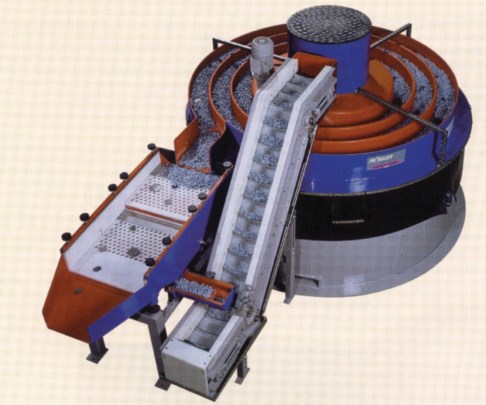
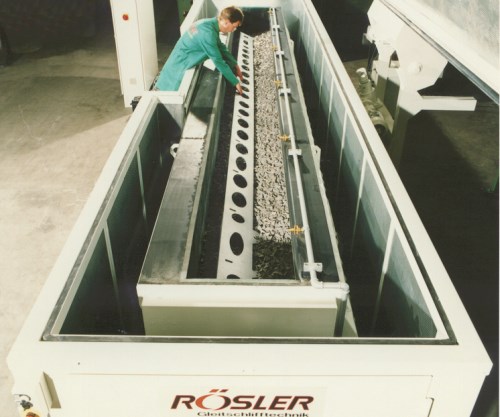
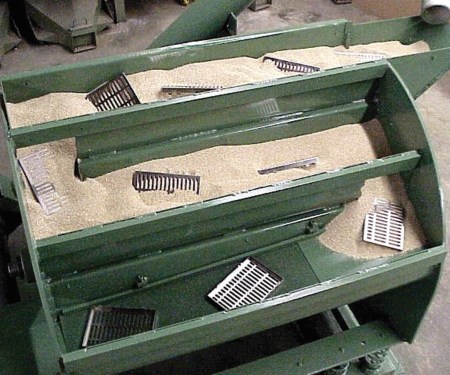
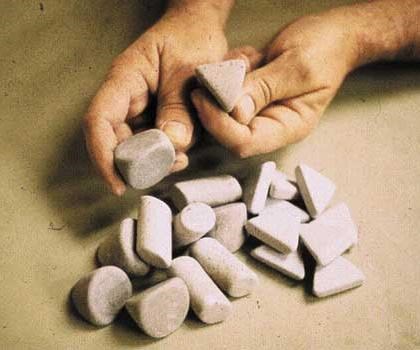
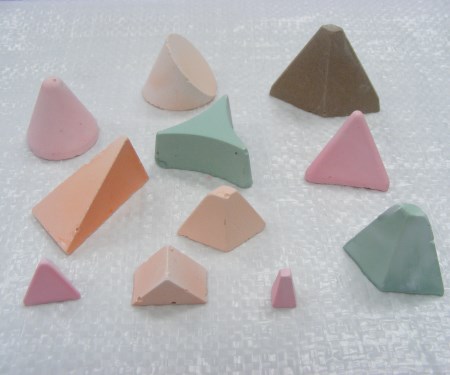



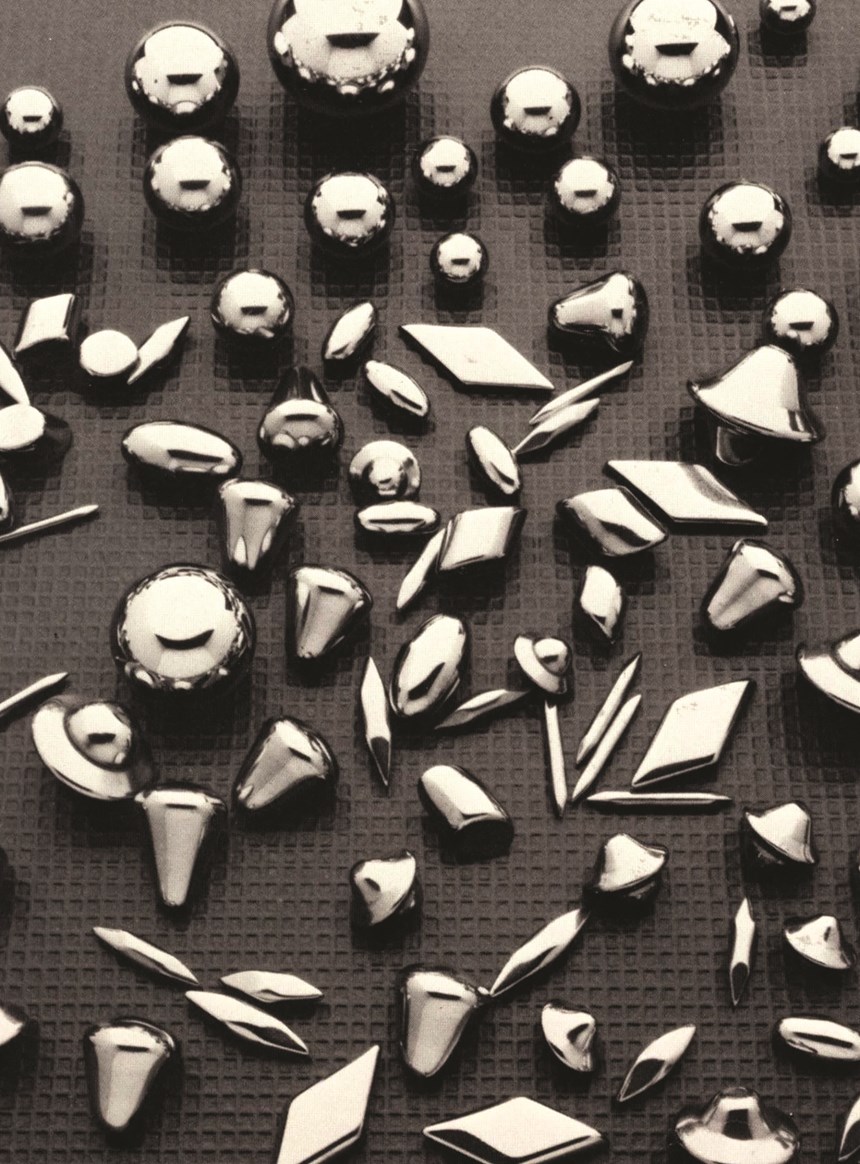
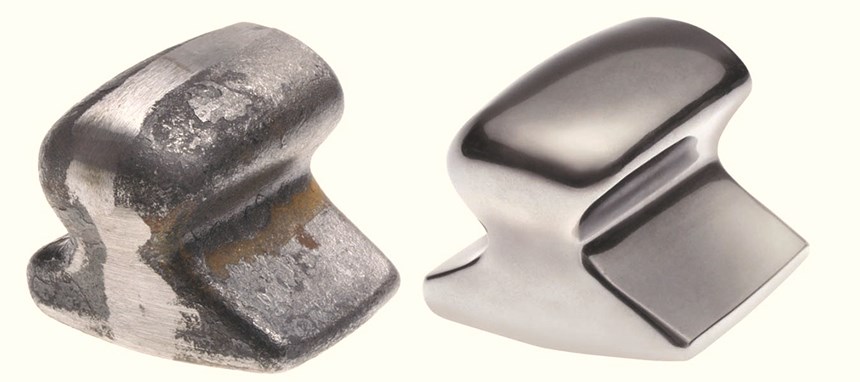















.jpg;maxWidth=300;quality=90)










